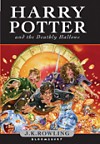
I received an intriguing press release the other day. It arrived with a photo of someone on a pink motor scooter touting a new service: London-based Scooter Computer. At first, I thought the release was alluding to a new built-in gadget for sexually ambivalent bikers, but it turns out not to be anything of the sort. So, forgive me for having such a politically incorrect thought.
In fact, the press release is about a UK startup company who ride to the rescue of those bewildered by IT problems at home, in the office, or SOHO. According to the release, the high-tech scooter cavalry come to the rescue on “quirky pink scooters” and will help fix your computer, install software, sort out your digital camera and even set you up on Facebook or help you download from iTunes and other sites if you are unsure as to how to go about that. Now, there have always been peripatetic quick fix tech people around almost since the moment the first person had a PC delivered to their home and discovered they couldn’t figure out which wire went where and broke their coffee cup holder on day one.
So, what makes the pink scooter computer guys any different, apart from the fact that they ride gaudy bikes? I figured that any technically inclined assistant charging a plumber’s rate could help set up a silver surfer with a Facebook account just as easily as shove a big chunk of RAM into a bored housewife’s computer…without getting bogged down in small talk.
Apparently, unlike plumbers and cable guys, the Scooter Computer mob will save you money on tech support lines and will talk you through what they are doing to fix or setup your gadget or computer so that you have the information to hand for future reference. I suspect this means that you would not need to call them out again for the same problem, again, very unlike a plumbing problem. Mark Dixon, a spokesman for Scooter Computer, says this is “the ideal service for anyone with IT/Tech/gadget problems.”
I have to admit, one thing I never do if I have a problem with a computer or gadget is call the technical support line, which should I call and expensive toll number and essentially pay the manufacturer to fix something that shouldn’t have been broken in the first place. The next thing I don’t do is take it back to the point of purchase, if that happens not to be an e-shop.
Finally, the last thing I do is not to read the manual. A much quicker solution is simply to Google the problem and if that doesn’t produce an answer, then there is always the manufacturer’s press office. But, then that’s probably not accessible to most users outside the world of journalism. But, it often helps, as regular readers who remember my Dell Inspiron laptop problem, the ntl netguard issue, and the VirginMedia OpenDNS debacle will recall.
One thing I almost always do when I figure out what’s wrong with a gadget, computer, or website is to blog it on Sciencetext.com, that way I have a record of what I did to rectify the situation for future reference. Moreover, since many of the problems I come across and ultimately solve turn out to be quite common, Sciencetext.com also acts as a repository for other people who may suffer from tech fallout too.
Scooter Computer founder Will Foot said: “We spotted that people did not have the knowledge or the time to get the most out of their computers and gadgets. With iPods, Blackberrys, digital cameras and millions of home computers it was clear that there was a demand for reliable IT support in the home.”
The team offer computer testing, installation of parental controls, virus protection advice, data backup and general troubleshooting. They will also sort out your digital photo needs, iPod storage questions and even offer training in your own home. It’s likely that the idea if it is truly successful will be hijacked by other companies. Foot adds that big American companies and large retailers are looking to move in on this area of business and he’s happy for the competition, having found a way to bring the helpdesk right to your home or SOHO with no traffic or parking problems, a deliberate lack of jargon, all on seriously gaudy motor scooters.



 A vast underground network exists in the American North West. The network is composed of the usual hubs of major activity with numerous interconnections, a complex packet-based communication system, and peer-to-peer sharing. But, this is not the familiar kind of network of BitTorrents, search engines, and wikis. This is a living organism, perhaps the biggest living organism. A fungus known as Armillaria ostoyae. we know almost instinctively that A. ostoyae is alive. It is an ordered entity, it assimilates nutrients and excretes waste products, it grows, it reproduces. Its metabolic pathways carry packets of chemical information along its network of tendrils. It exists beneath a 9 square kilometre area east of Prairie City in a remote corner of Oregon’s Blue Mountains at about 2000 metres.
A vast underground network exists in the American North West. The network is composed of the usual hubs of major activity with numerous interconnections, a complex packet-based communication system, and peer-to-peer sharing. But, this is not the familiar kind of network of BitTorrents, search engines, and wikis. This is a living organism, perhaps the biggest living organism. A fungus known as Armillaria ostoyae. we know almost instinctively that A. ostoyae is alive. It is an ordered entity, it assimilates nutrients and excretes waste products, it grows, it reproduces. Its metabolic pathways carry packets of chemical information along its network of tendrils. It exists beneath a 9 square kilometre area east of Prairie City in a remote corner of Oregon’s Blue Mountains at about 2000 metres. Different social media, such as wikis, MySpace, Flickr, and various forums have different ways for people to give and receive gifts, according to Swedish scientists.
Different social media, such as wikis, MySpace, Flickr, and various forums have different ways for people to give and receive gifts, according to Swedish scientists. Science is revolting! A revolution is underway and the battles are taking place on the Microsoft Office frontline. Science, the journal of the America Association for the Advancement of Science (AAAS), is ditching support for Microsoft format office documents. In its notice to authors it advises that:
Science is revolting! A revolution is underway and the battles are taking place on the Microsoft Office frontline. Science, the journal of the America Association for the Advancement of Science (AAAS), is ditching support for Microsoft format office documents. In its notice to authors it advises that: